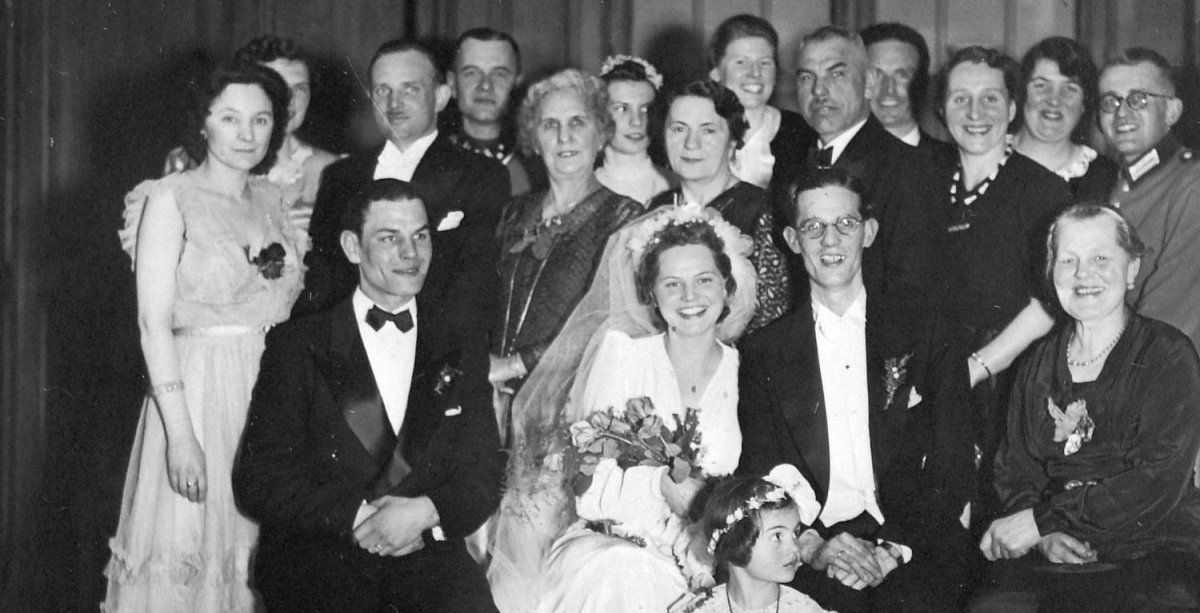Marriage has served as the seal of love for thousands of years. While influential families have entered into marriages of interest to ensure the unity of the estate or to increase the families' wealth, marrying for love became dominant in the modern era.
In Hungary, the backgrounds and roots of laws pertaining to marriage can be traced to the founding of the Hungarian state. In Christian states, the Council of Trent, which ended in 1563, made church registries compulsory, including births, Christenings, marriages, and deaths. The same council also made ecclesiastic marriages compulsory. Nevertheless, states and the Church would battle for the rights to oversee marriage throughout the following centuries. The religious-political debates of the 19th century centred around marriage, especially those between denominations and the children born from these.
After several years of dispute, these matters were settled in Hungary by Act XXXI of 1894 on marriage law, and Act XXXIII of 1894 on state registrars passed during Sándor Wekerle's first term in Office (17 November 1892 – 1 January 1895). These decreed that registries and marriages would henceforth be overseen by the state. The marriage law provided details regarding engagement, the barriers to marriage, marriage, the invalidity and termination of a marriage. Separate passages dealt with 'separation from bed and table', and marriages performed abroad and marriage between foreigners.
The law entered into force 125 years ago on 1 October 1895 and was based on three principles. These were formulated by Count Albert Apponyi: the law extended to all citizens regardless of religion or denomination, that the state oversaw all issues relating to marriage, and that civil marriage was compulsory. The law itself did not undermine church principles. Nevertheless, the state's role in the jurisdiction of marriage created a level playing field.
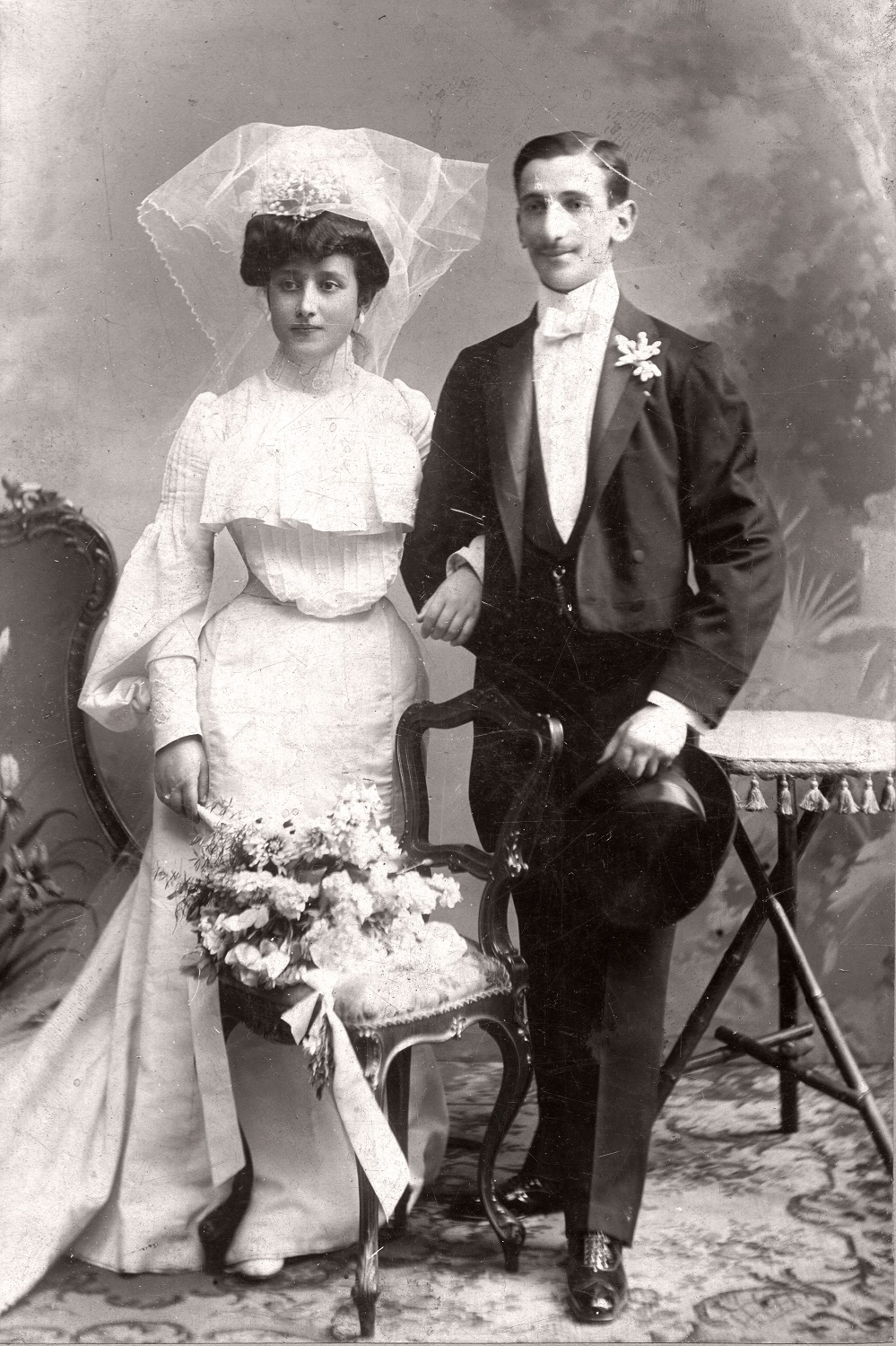 IPhotograph of a wedding around 1900 (Photo: Fortepan/No.: 62099)
IPhotograph of a wedding around 1900 (Photo: Fortepan/No.: 62099)
The first civil marriage was conducted on the day the law entered into force on 1 October 1949 in Budapest in the Registry Office in Gyár Street (present-day 2 Liszt Ferenc Square). All major newspapers reported on the event, including the Vasárnapi Újság, the Pesti Napló, the Budapesti Hírlap and the Pesti Hírlap. The final of these referred to the event as a triumph of liberalism. The huge crowd of onlookers and street traffic was controlled by mounted and foot police.
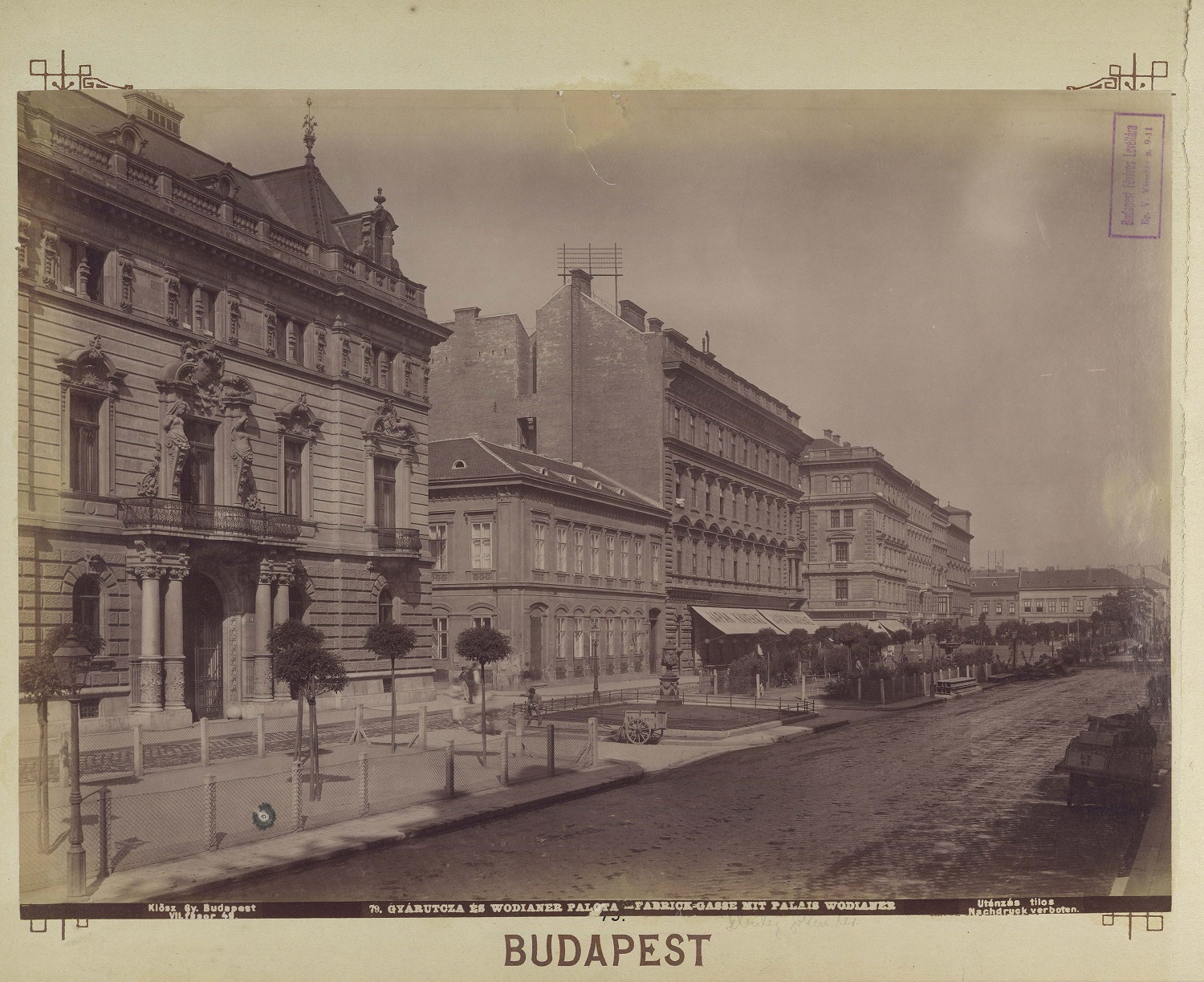 The one-storey building on Gyár Street (present-day 2 Liszt Ferenc Square) photographed by György Klösz around 1890. The II. Registry Office was created here, where the first civil marriage was conducted on 1 October 1949 (Photo: Fortepan / Budapest Archives. Reference No.: HU.BFL.XV.19.d.1.07.080)
The one-storey building on Gyár Street (present-day 2 Liszt Ferenc Square) photographed by György Klösz around 1890. The II. Registry Office was created here, where the first civil marriage was conducted on 1 October 1949 (Photo: Fortepan / Budapest Archives. Reference No.: HU.BFL.XV.19.d.1.07.080)
The Registry Office was set up on the ground floor of the single-storey yellow house. Portraits of the king and queen consort were hung above the ornate desk, and two armchairs were placed before the desk for those being married. The groom, Károly Joakhim Kriszhaber, a factory manager, and his fiancée Anna Mezei, the daughter of a member of parliament, Mór Mezei, said their I do's at the II Registry Office at a ceremony which began at 11 a.m. The marriage was performed by József Mátray, registrar, who wore an ornate Attila short coat with a slash of the national tricolour. As no speeches were given, the ceremony lasted only 10 minutes.
According to a report in the 2 October 1895 issue of the Pesti Hírlap, in addition to the witnesses, Zsigmond Décsey, President of the Council of the Curia (supreme court), and Tivadar Hüttl, a porcelain-factory owner, the members of the wedding party included such illustrious persons as
"Sándor Nagy and Ödön Gajáry members of parliament, József Kőrössy, director of the Budapest Statistical Office, János Meter, Royal Councillor, Dr Elf Rózsavölgyi, Gyula Auspitz, Dénes Beck, Chief Dr Imre Baintner members of Budapest City Council, as well as Mrs David Bischitz, Albert Sturm, József Kiss, several members of the judicial courts, a number of writers and journalists, several outstanding lawyers, and a large number of ladies."
After signing the registry, the newly-weds drove to the synagogue on Dohány Street, where Chief Rabbi Dr Kohn said a Hebrew blessing, quoted on the 1 October 1895 issue of the Pesti Napló: "This is the blessing left to us by Moses, and for which you came here. We have two kinds of laws which should both be sacred before you and us all. One was given by God, the other by our beloved Hungarian homeland, for our happiness." The newly-weds received the good wishes of their guests after the religious ceremony and left for their honeymoon in the early afternoon.
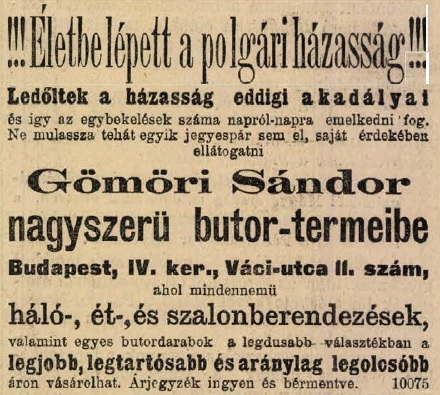
Civil marriage was exploited by more endeavouring entrepreneurs, as seen in the advertisement published in the 3 October 1895 issue of Pesti Napló, which reads: "Civil marriage law in effect! Limitations on marriage have been raised. The number of marriages will increase day by day. No newlyweds should delay in visiting the furniture shop of Sándor Gömöri under 2 Váci Road, Budapest, 5th District., where they will find all furniture for sleeping, eating and receiving guests. Certain types of furniture are available in the broadest offering at the best price. Price list free of charge."
When civil marriage and registries were created, only three offices served the whole of Budapest. The 4th 8th, 9th and 10th Districts were assigned the I Registry Office on the corner of Kálvin Square and Soroksári (present-day Ráday Gedeon) street in the building that once housed the Two Lions Inn. The registrar, Gyula Kühnel performed the first civil marriage here on 10 October 1895.
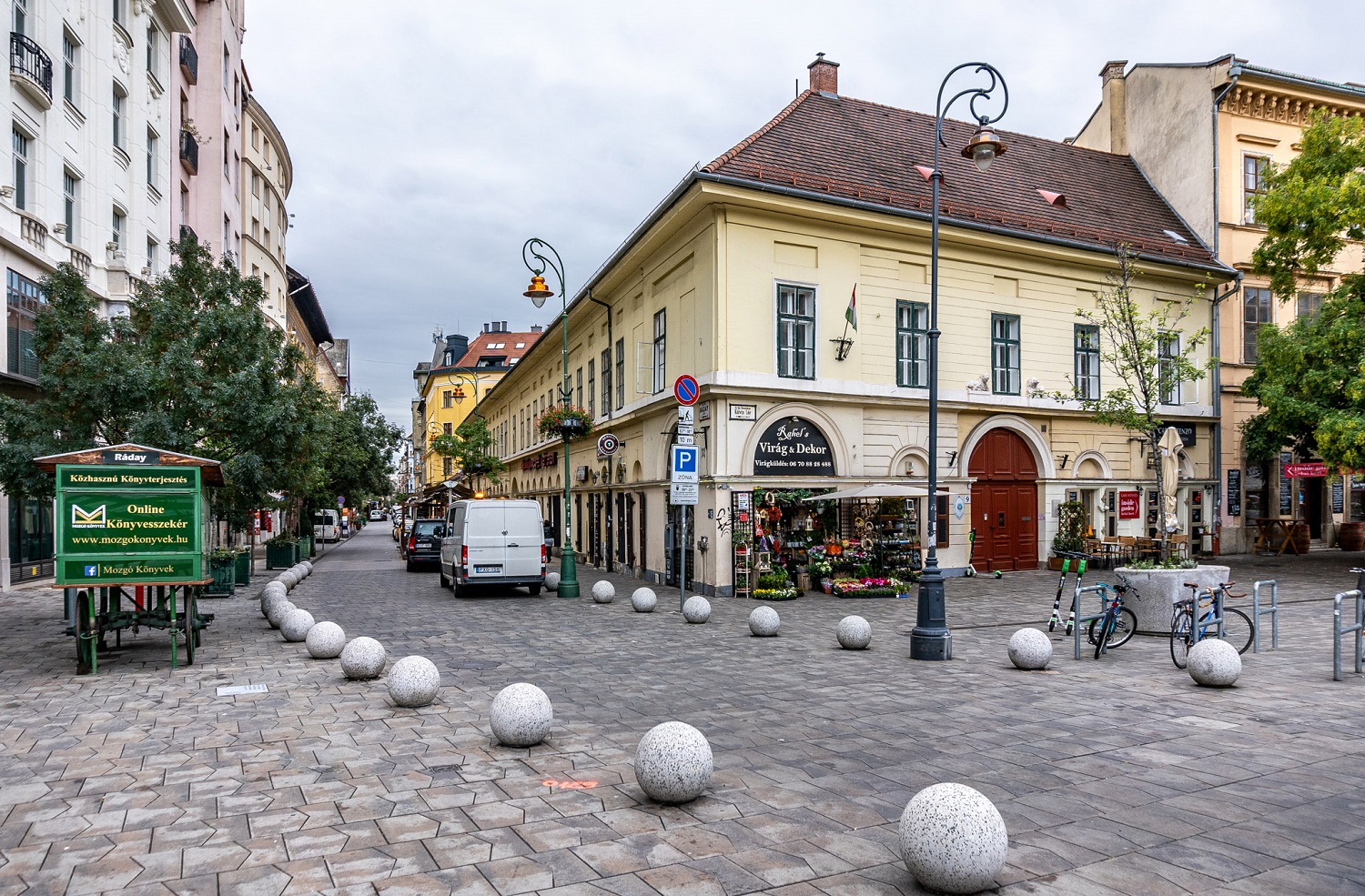 I Registry Office operated on the first floor of 9 Kálvin Square in the building that once housed the Two Lions Inn. The first civil marriage here was performed on 10 October 1895 (Photo: Balázs Both/pestbuda.hu)
I Registry Office operated on the first floor of 9 Kálvin Square in the building that once housed the Two Lions Inn. The first civil marriage here was performed on 10 October 1895 (Photo: Balázs Both/pestbuda.hu)
The 5th, 6th and 7th Districts were assigned the II Registry Office under present-day 2 Liszt Ferenc Square. The III Registry Office served the Buda area that is the 1st, 2nd and 3rd Districts. It was housed under 46 Donáti Street. Registrar Béla Herman performed the first civil marriage here on 8 October 1895.
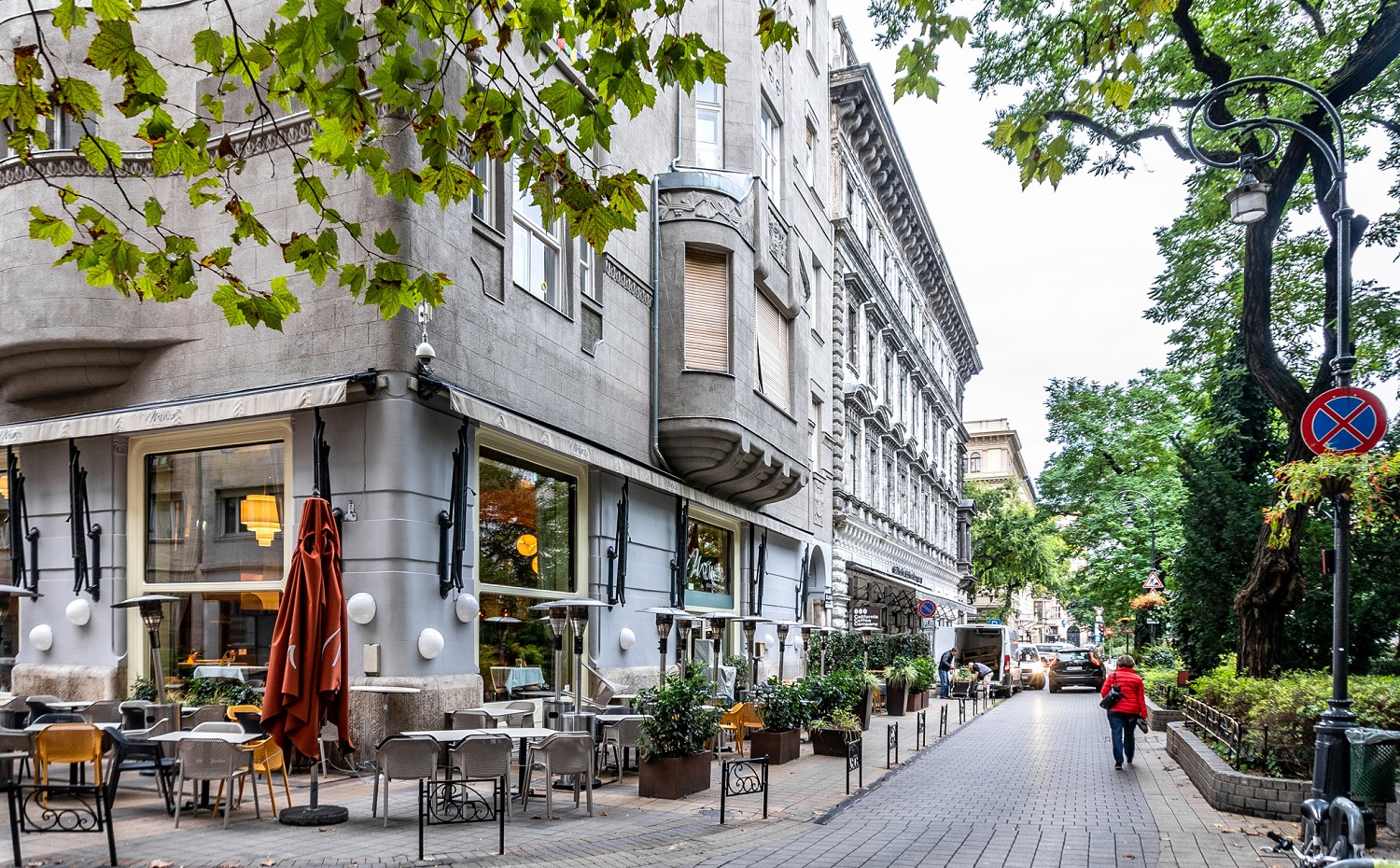 The single-storey house that served as the II Registry Office was torn down at the beginning of the 20th century. The new five-storey residential building in the art nouveau-style was constructed in 1904–1906 (Photo: Balázs Both/pestbuda.hu)
The single-storey house that served as the II Registry Office was torn down at the beginning of the 20th century. The new five-storey residential building in the art nouveau-style was constructed in 1904–1906 (Photo: Balázs Both/pestbuda.hu)
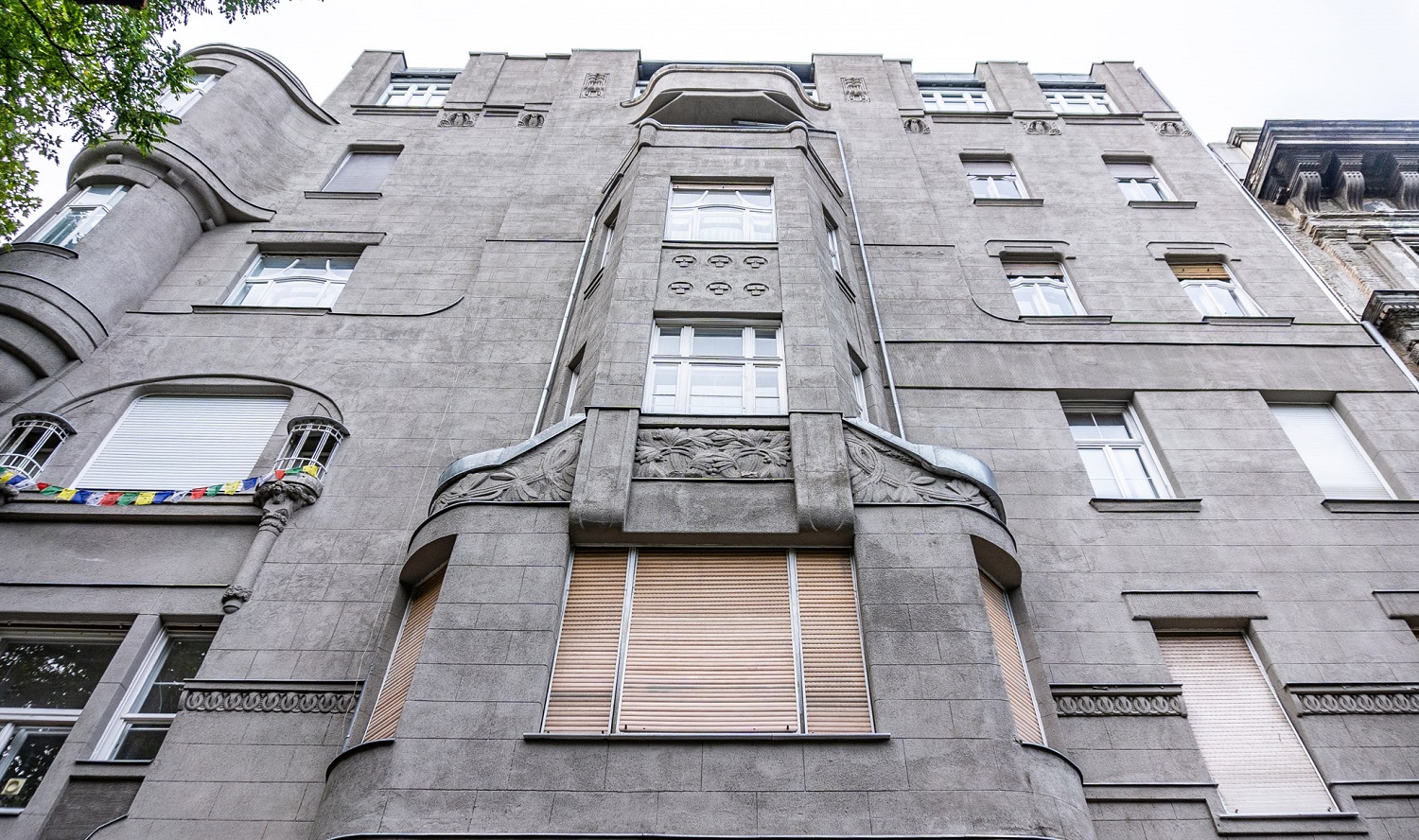 The façade of the building designed by Emil Vidor on Liszt Ferenc Square. The single-storey building that housed one of the first Registry Offices in Budapest once stood here (Photo: Balázs Both/pestbuda.hu)
The façade of the building designed by Emil Vidor on Liszt Ferenc Square. The single-storey building that housed one of the first Registry Offices in Budapest once stood here (Photo: Balázs Both/pestbuda.hu)
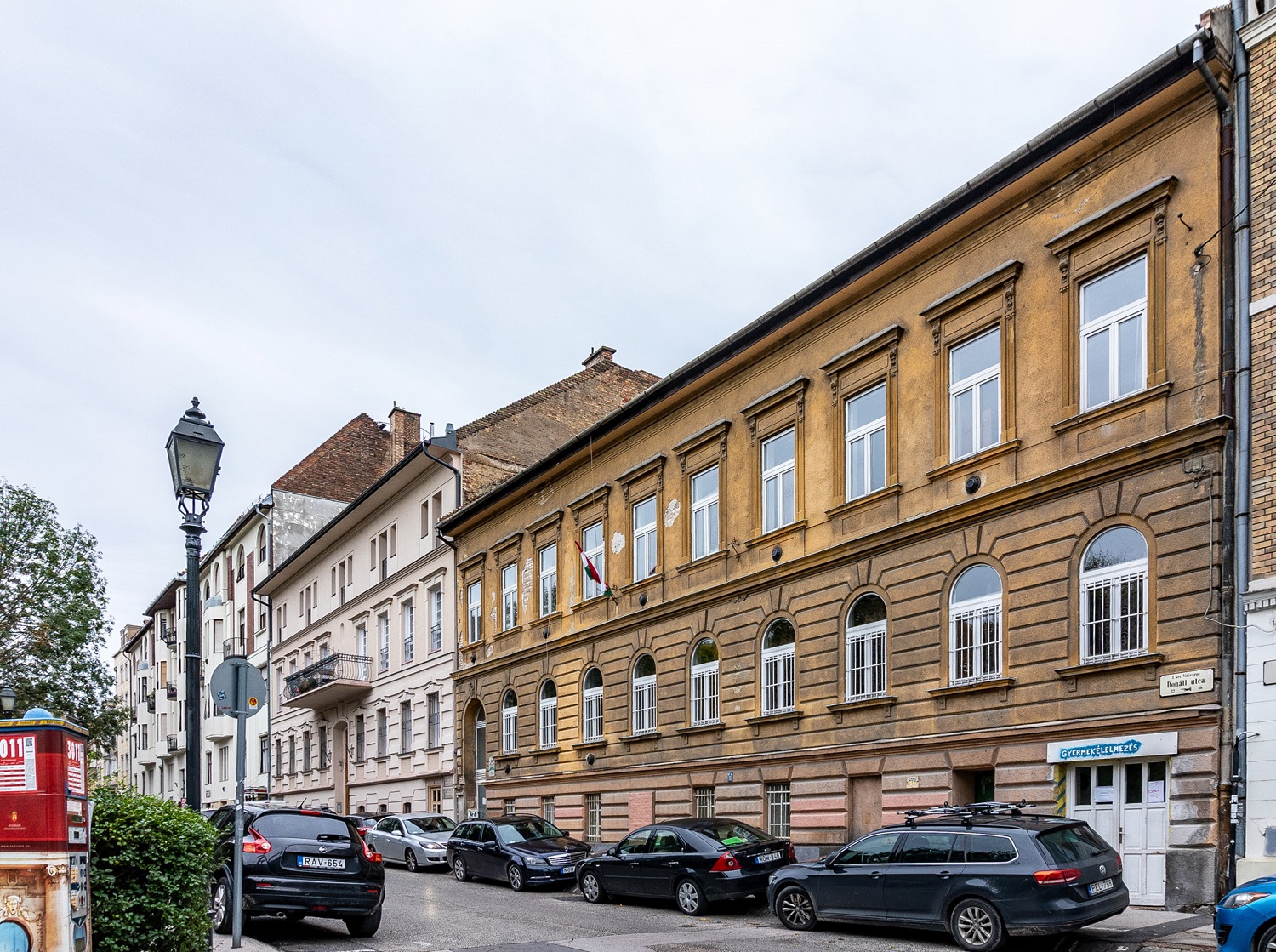 The III Registry Office in Buda operated in 46 Donáti Street (Photo: Balázs Both/pestbuda.hu)
The III Registry Office in Buda operated in 46 Donáti Street (Photo: Balázs Both/pestbuda.hu)
Due to the extreme interest, the Registry Offices had a hard time handling the initial influx of couples. Gyár Street was especially overrun. Over time their capacity was expanded.
Mór Jókai's second marriage was also performed in the Gyár Street office, the press at the time reported on the event in detail. The 74-year-old writer married the actress Bella Grósz (Nagy) on 16 September 1899 among public outcry and denouncement from his family.
Act XXXIII of 1894 placed the right to name registrars and their deputies with the Ministry of the Interior. With the introduction of the soviet local government system in 1950, civil marriage was transferred to these soviet-style councils. After the fall of communism in Hungary administration of registries has been the responsibility of mayor's offices, and Act I of 2010 defines the scope of registries and marriage. (It should be noted that the soviet council system and the terms 'city council' and 'local council' often used by PestBuda to refer to present-day local governments cannot be equated. In present-day contexts, the term council is used to avoid the clunky English terms 'local self-government' or 'local government' and better differentiate municipalities from central decision-making. – Trans.)
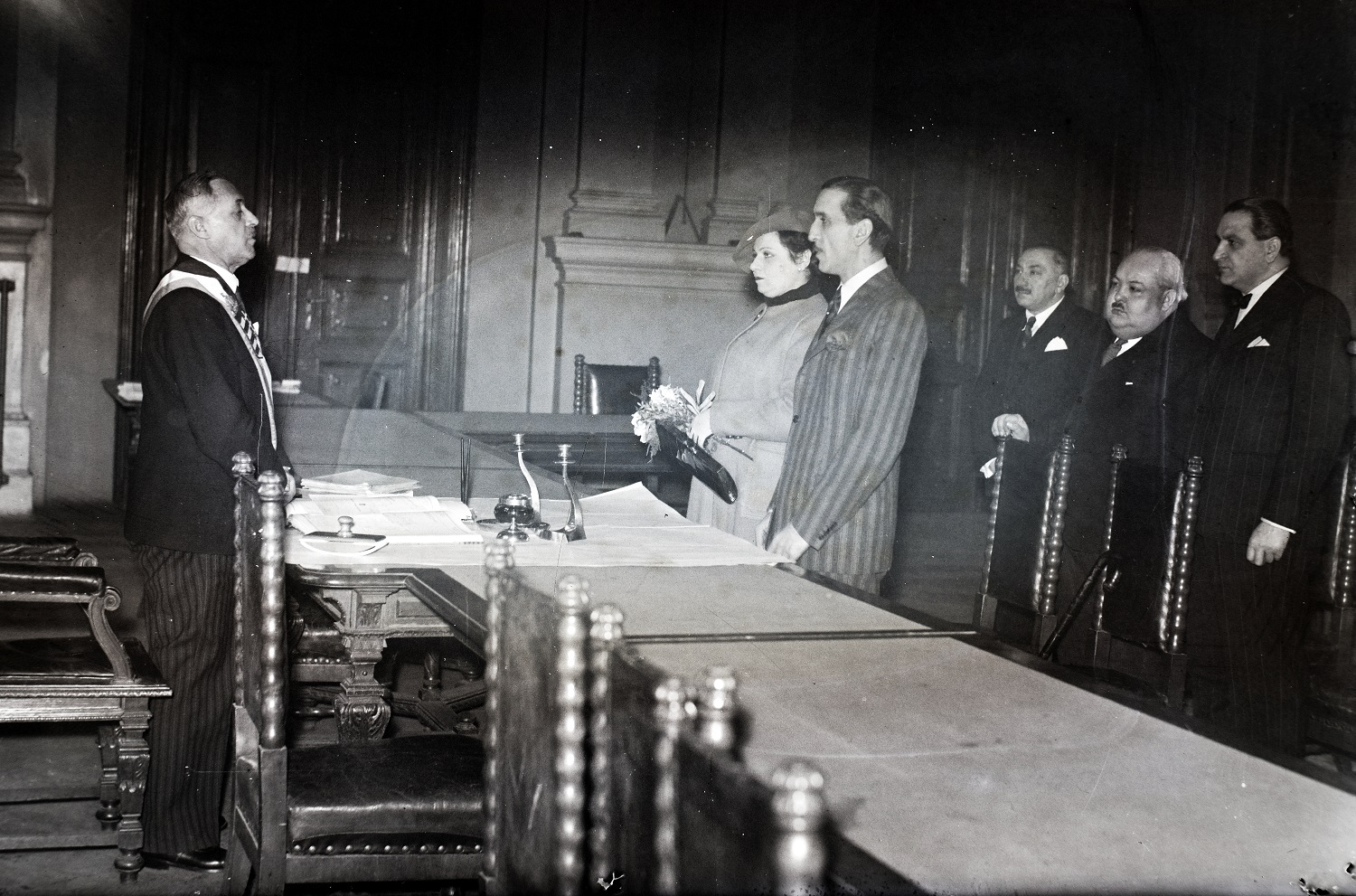 Civil marriage in 1938 (Photo: Fortepan/No.: 177004)
Civil marriage in 1938 (Photo: Fortepan/No.: 177004)
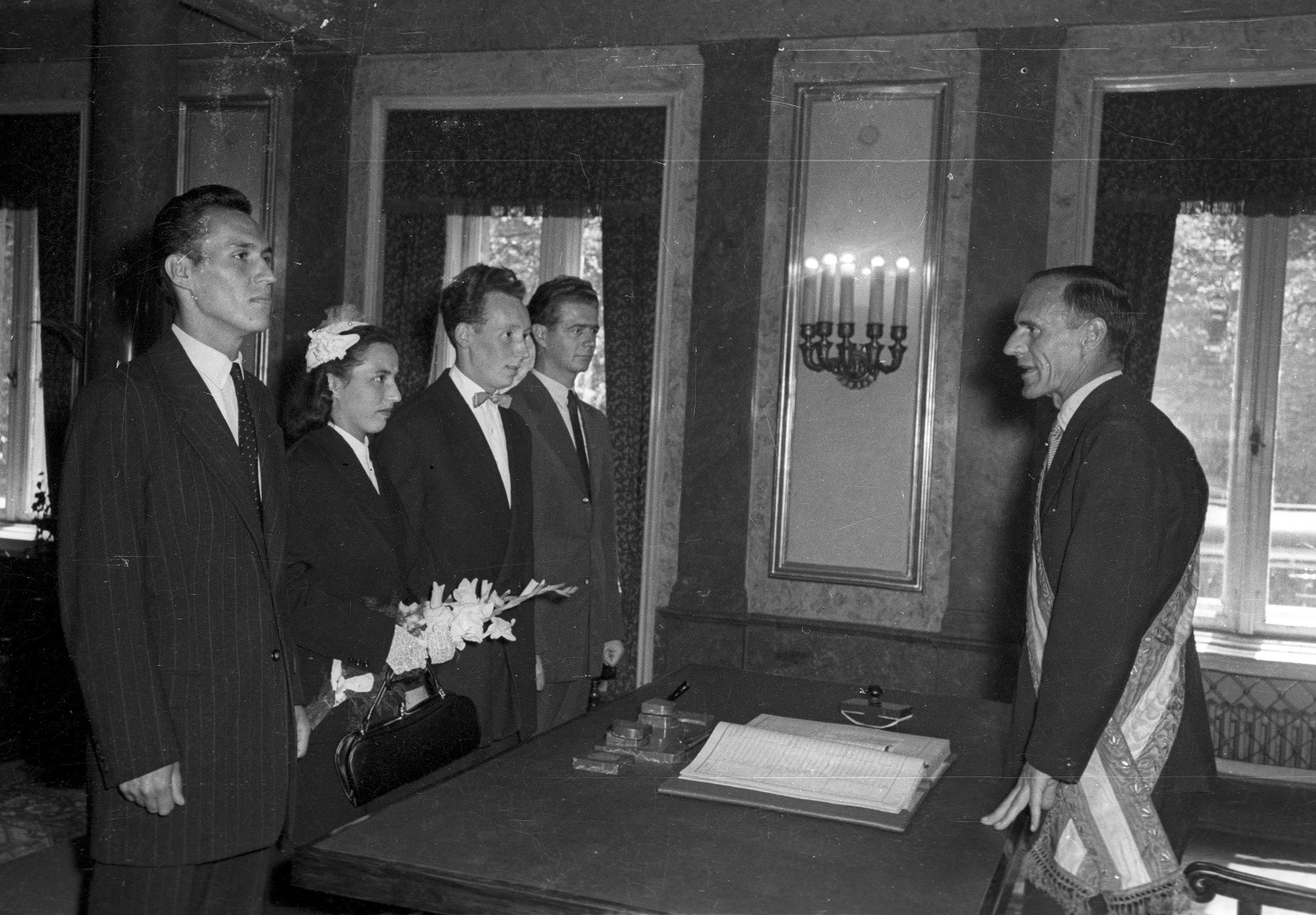 Civil marriage in 1953 in the Central Marriage Hall under 13 Teréz Boulevard, then Lenin Boulevard (Photo: Fortepan/No.:123437)
Civil marriage in 1953 in the Central Marriage Hall under 13 Teréz Boulevard, then Lenin Boulevard (Photo: Fortepan/No.:123437)
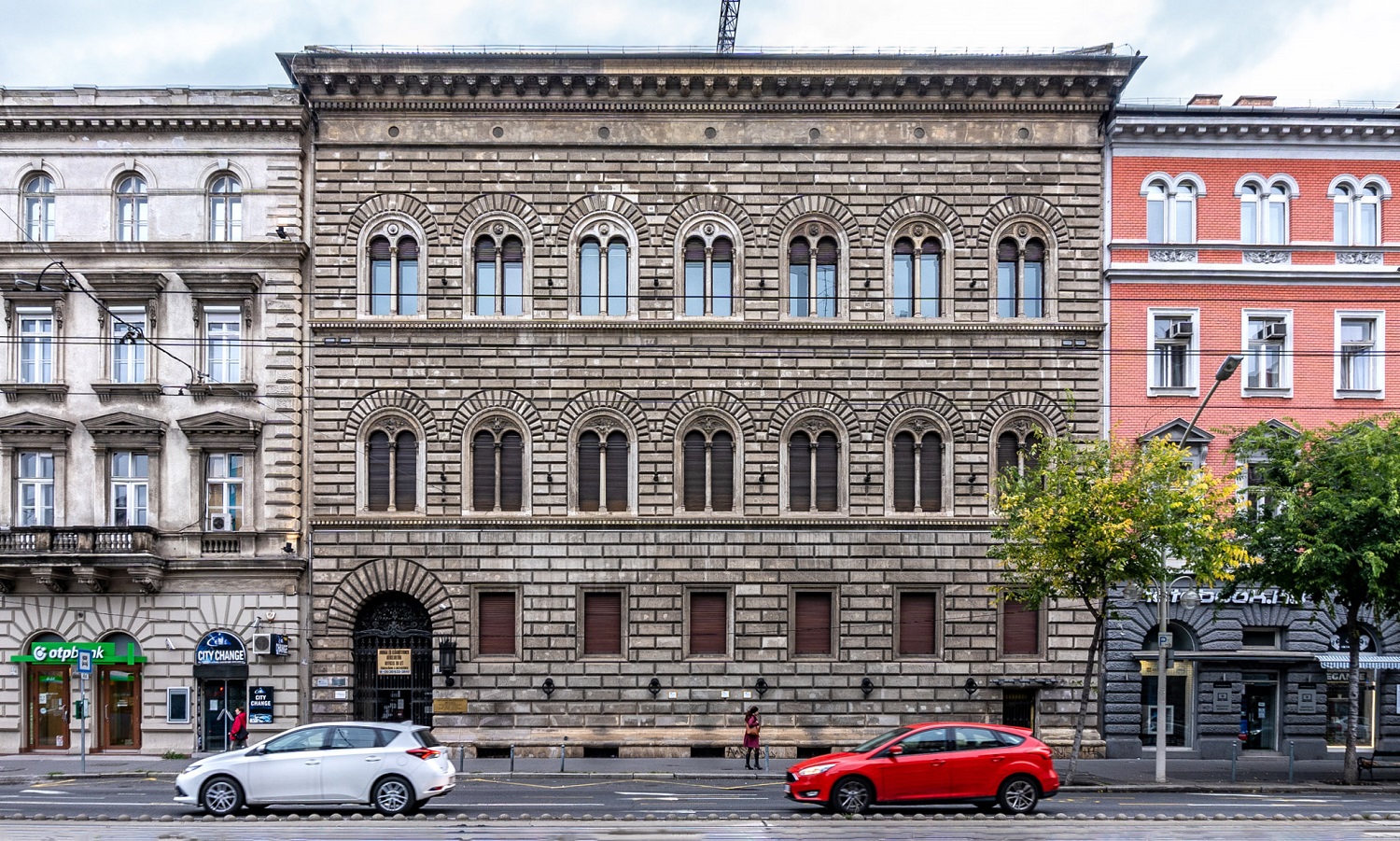 The building under 13 Teréz Boulevard today (Photo: Both Balázs/pestbuda.hu)
The building under 13 Teréz Boulevard today (Photo: Both Balázs/pestbuda.hu)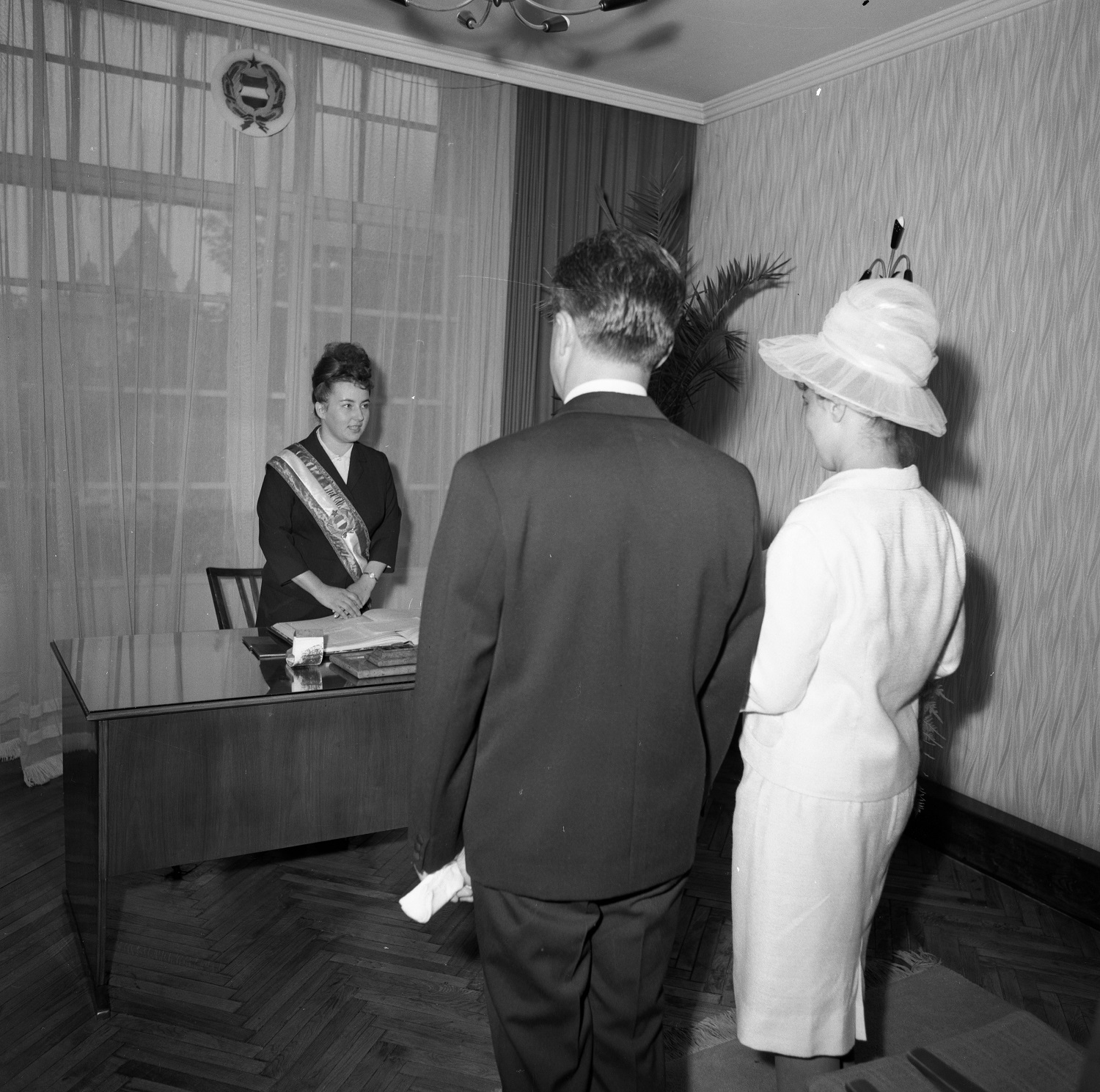 Civil marriage in 1966 (Photo: Fortepan/No.: 59867)
Civil marriage in 1966 (Photo: Fortepan/No.: 59867)
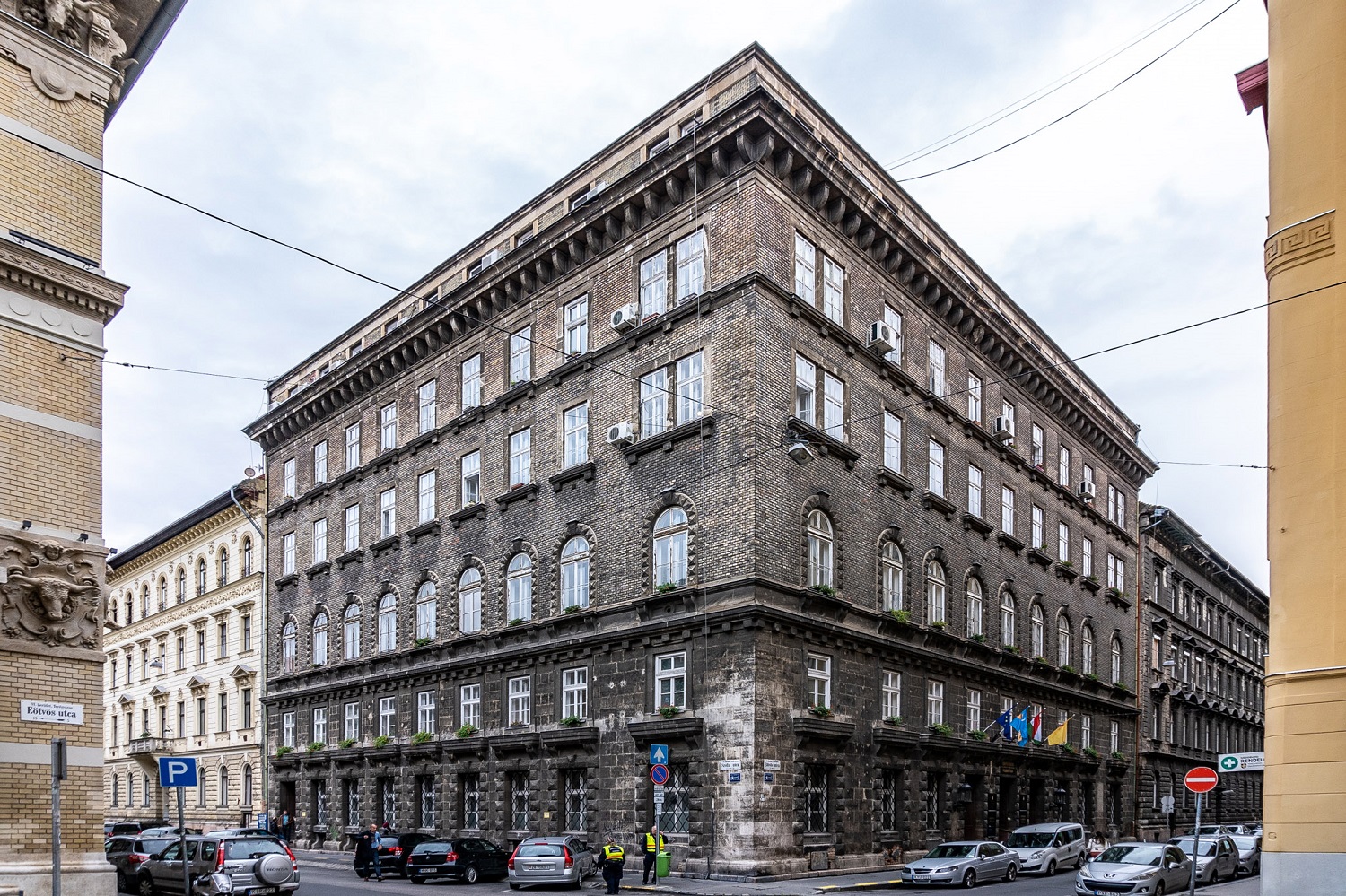 In the present-day Registry Offices generally operate within the buildings of local councils and most marriage halls can also be found in these. The photograph shows the Mayor's Office of Terézváros (3 Eötvös utca) (Photo: Balázs Both/pestbuda.hu)
In the present-day Registry Offices generally operate within the buildings of local councils and most marriage halls can also be found in these. The photograph shows the Mayor's Office of Terézváros (3 Eötvös utca) (Photo: Balázs Both/pestbuda.hu)
Cover photo: Newly-wed couple with the wedding party in 1913 (Photo: Fortepan/No.: 21560)

